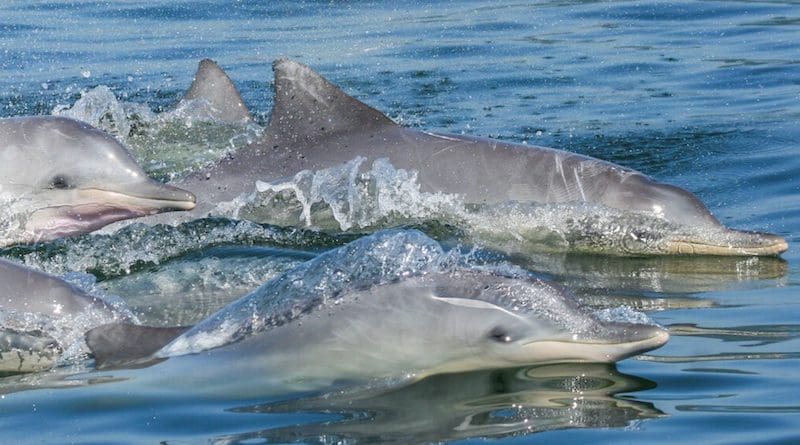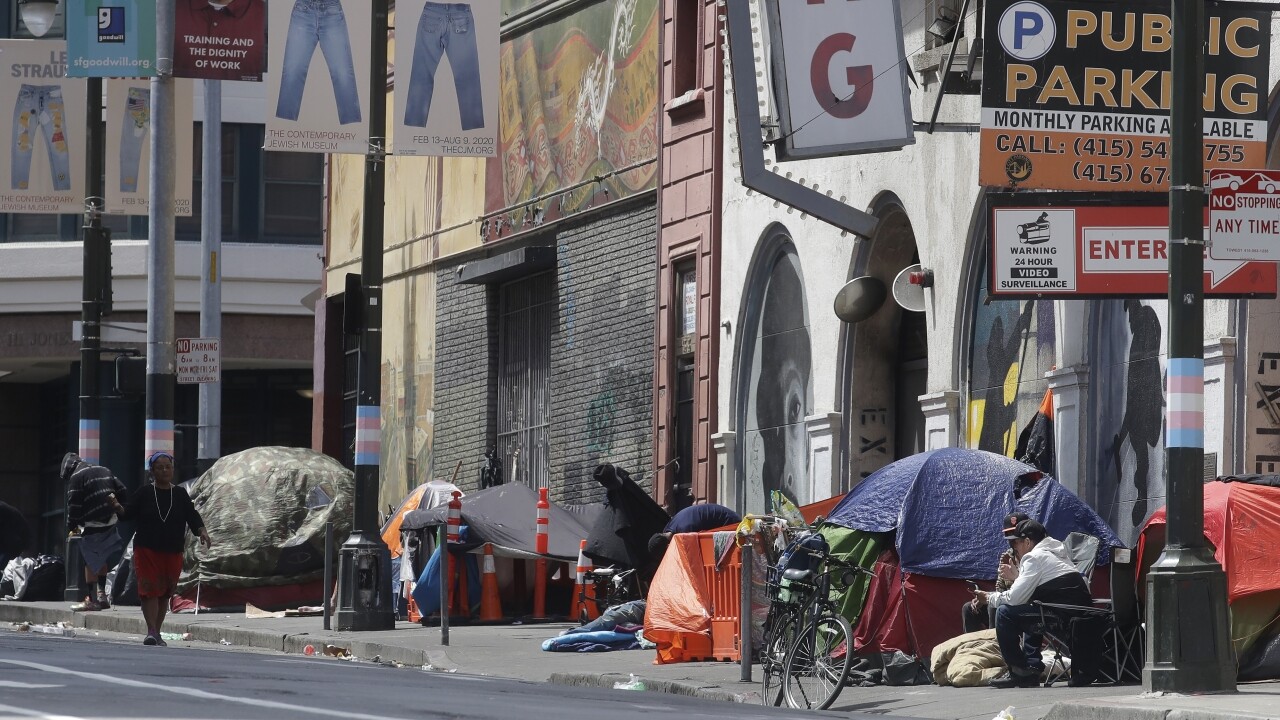
Education And Research Bring Rio’s Dolphins Back From Brink Of Extinction – Analysis
By Mongabay
By Sarah Brown and Kashfi Halford
Just 60 kilometers (37 miles) outside the city of Rio de Janeiro, dozens of Guiana dolphins swim cautiously past the motorboat, cutting through the water’s surface to breathe. Leonardo Flach stands at the bow taking photos to later identify individuals based on their dorsal fins. With a clear sea and surrounding forest-covered mountains, the landscape of Sepetiba Bay is scenic, yet the water is anything but pristine.
The Guiana dolphin is “the most common dolphin species in Brazil, but at the same time, one of the most endangered,” Flach, a biologist and co-founder of the nonprofit Instituto Boto Cinza (Guiana Dolphin Institute), told Mongabay. He’s studied Guiana dolphins in Sepetiba Bay since the 1990s to understand the dangers they face and to find solutions to protect them.
One of the main threats to these dolphins is chemical pollution in the sea. Flach was part of a recently published that found high toxin concentrations in Guiana dolphins (Sotalia guianensis) over a 12-year period in Sepetiba Bay, the result of dredging, industrial pollution and raw sewage. Up to 80% of sewage from the region is untreated and pumped into the bay, Flach said, contaminating the sea with pathogens and pharmaceuticals that are passed through urination.
“[Rio de Janeiro’s] Guiana dolphins, which live in semi-enclosed bays, are among the most contaminated in the world,” Mariana Alonso, a professor at the Biophysics Institute at the Federal University of Rio de Janeiro, who was not involved in this study, told Mongabay.
The exposure to these chemicals is linked to altered hormones and problems with the reproductive and immune systems in Guiana dolphins, the study found, leading to greater susceptibility to infectious diseases. A virus outbreak from November 2017 to March 2018 among the Guiana dolphins was unusually deadly: At least 277 dolphins died, wiping out nearly a quarter of the Sepetiba Bay population as well as 6% of the Guianas in the neighboring Ilha Grande Bay.
“The virus was more lethal because it spread among a population that was already in poor health,” Flach said.
The Guiana dolphin is particularly vulnerable to contaminated water because it exhibits what is known as “site fidelity” and rarely, if ever, leaves the place where it was born. This means that no matter how polluted the water is, the Guiana dolphin will remain there, despite the impact on its health.
Flach studies Guiana dolphins in both Sepetiba Bay and neighboring Ilha Grande Bay, a popular tourist spot. Although Ilha Grande waters are more pristine than Sepetiba’s and the area has less industry, the sea still gets contaminated from oil companies and pollution coming from Sepetiba Bay. High levels of mercury have also been recorded there, Alonso said, although research hasn’t yet confirmed if it occurs naturally or is linked to industrial pollution.
Once present throughout Rio de Janeiro in their thousands, Guiana dolphins have dwindled as urban expansion has soared. Of the three bays where the Guiana dolphin resides — Sepetiba, Ilha Grande and Guanabara — the worst affected is Guanabara Bay, the famous stretch of sea visible from Rio’s iconic Christ the Redeemer and Sugarloaf. In the 1980s, more than 400 Guiana dolphins lived in Guanabara. Now, fewer than 30 remain.
Saving Rio de Janeiro’s most polluted bay
Guanabara Bay has a total water surface of 328 square kilometers (127 square miles) and is one of the most populated areas in South America, supporting about 11 million people. It’s also surrounded by the second-largest industrial concentration, with nearly 10,000 industries, including chemicals, as well as 16 oil terminals and 12 shipyards. A2017 study describes the development in Guanabara as “uncontrolled with limited or no planning for sustainability.”
Guiana dolphins living in Guanabara Bay face constant daily threats from industrial toxins, raw sewage and noise pollution from ships that interfere with the dolphins’ sonar. This combination causes chronic stress, which impacts the dolphins’ immunity and reproductive systems, Rafael Carvalho, a biologist at the Laboratory of Aquatic Mammals and Bioindicators (MAQUA) at the State University of Rio de Janeiro, told Mongabay.
Females in the bay have been observed without ever having offspring, despite having reached sexual maturity years before, which means they likely had difficulties in reproducing, Carvalho said. For those that do manage to reproduce, their calves are faced with a “very low” chance of survival, he added.
“That’s exactly what these chemical components do to the health of the animal,” Carvalho said. “It prevents reproduction. That’s why there’s been a big decline in the population in the last few years.”
Cleaning Guanabara Bay and reducing daily pollution is an enormous task and requires a multipronged solution. But progress is being made. Águas do Rio, a water and sewage service company in Rio de Janeiro, implemented a series of infrastructure and technology developments in Guanabara Bay in the last two years, preventing 82 million liters of sewage from being poured into the sea, according to a statement the company sent to Mongabay.
Researchers at MAQUA found that a conservation unit created in 1984 in the north of the bay has become a sanctuary for Guiana dolphins, highlighting the importance of protected spaces and the need to create more.
“We realized throughout our monitoring that dolphins have a tendency of spending a lot of time in or near that region to this conservation unit, most likely because this conservation unit has little boat traffic, it has some restrictions on use [such as fishing] and it retains some characteristics of better environmental quality,” Carvalho said.
Research to protect the Guiana dolphin
One way of understanding the threats to dolphins is to analyze carcasses to find out what killed them and what condition they were in before they died. But to get a clearer picture of the health of the current population, researchers need to analyze live specimens.
Over in Sepetiba Bay, Flach puts away his camera and balances a small harpoon-like device against his body. Observing the school of dolphins, he takes aim and fires a small arrow into the group, causing a commotion of splashing as it hits one and immediately drops into the water. With a whoop of triumph, Flach bends over the boat, scoops the arrow out of the water, and plucks off the blob of fat and skin at the end.
The biopsy causes mild discomfort, but it’s not harmful, Flach said. For researchers, this cluster of flesh is a valuable source of information to determine the sex of the dolphin and measure the toxic accumulations and pathogens in its blubber. Flach places it into a test tube, where it will be sent to researchers at the Federal University of Rio de Janeiro to analyze its contents.
Another way to monitor the dolphin population is through photos. In his office in the State Park of Cunhambebe Center in Sahy, near Sepetiba Bay, Flach has thousands of images taken of Guiana dolphins’ dorsal fins as they broke the water’s surface.
Each fin is unique like a human fingerprint, and the photos allow him to keep track of dolphin numbers. He also records the dolphins that get caught up in fishing nets and drown. Bycatch, when marine animals such as dolphins or turtles get accidentally trapped in nets set for fish, is another threat to Guiana dolphins and kills up to eight dolphins per month in Rio de Janeiro.
Flach’s research and activism helped lead to the creation of a 250 km2 (97 m2) protected marine reserve in Sepetiba Bay, which prohibits industry and predatory fishing. He also coordinated courses that awarded local young people a boat driving license, providing them an alternative income to fishing by guiding wildlife tours, such as dolphin watching, instead.
“We have to provide an alternative type of activity so that they can maintain their activities at sea and make a living at the same time without harming others and the marine ecosystem,” Flach said.
The move to ecotourism enhances the relationship between local communities and dolphins by making dolphins economically valuable and boosting the incentives to protect them and their environment. It also provides a way of making a decent income since industrial fishing has drastically reduced fish stocks, as well as ensuring traditional communities remain intact.
“The fish are running out, so the only source of income is for me to work in ecotourism or leave the community to do something else on the mainland,” Renan da Cruz Juvenal, a local fisherman-turned-tour guide, told Mongabay. He lives in a quilombo (a community of descendants of enslaved Africans) on Marambaia Island in Sepetiba Bay and took Flach’s course in 2014.
The combination of research, education and championing for public policies has had a significant impact on the dolphin population in Sepetiba Bay. “We put the brakes on a lot. I believe that if it weren’t for the research on the Guiana dolphin, we would have an increasing mortality rate,” Flach said.
With numbers dwindling across Rio and so few Guiana dolphins left in Guanabara Bay, their existence hangs by a thread. But experts say there is still hope. “You have to believe that there’s a future. And we’re working toward that, for preservation, for the future of this population,” Carvalho said. “If we believe that something’s gone, it’s over.”
- About the authors: Sarah Brown (words) and Kashfi Halford (video)
- Source: This article was published by Mongabay

Mongabay
Mongabay is a U.S.-based non-profit conservation and environmental science news platform. Rhett A. Butler founded Mongabay.com in 1999 out of his passion for tropical forests. He called the site Mongabay after an island in Madagascar.








